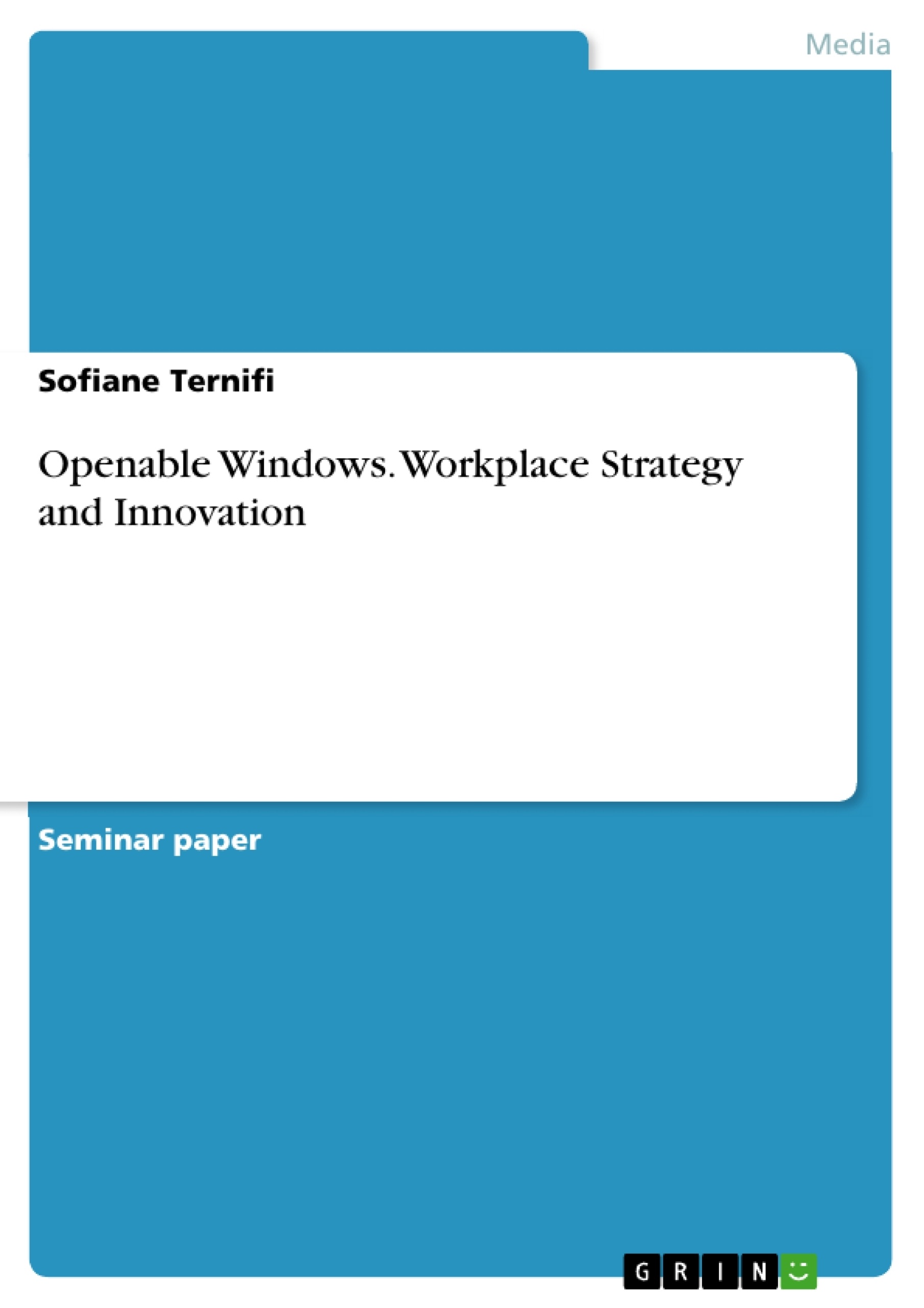The aim of this paper is to obtain an architectural understanding of openable windows in a work place, but it will focus more on openable windows in connection with human well-being. This topic is of contemporary value, since technological innovations have changed architectural structures, in which artificial lights are mostly integrated in providing light distribution to a workplace. A review of why people feel better when they are in a room in which windows can be opened at any time is also included.
Inhaltsverzeichnis (Table of Contents)
- Introduction
- Literature Review
- Windows versus Windowless Structure
- Openable Windows
- Conclusion
- References
Zielsetzung und Themenschwerpunkte (Objectives and Key Themes)
This paper aims to explore the architectural significance of openable windows in workplaces, particularly focusing on their impact on human well-being. It examines how the accessibility of openable windows contributes to a more positive and healthy work environment in the context of contemporary workplace design where technology often dominates lighting solutions.
- The role of architectural design in promoting human well-being
- The impact of natural light and ventilation on employee health and productivity
- The benefits of openable windows in workplaces, including psychological and physiological aspects
- The historical evolution of research on windows and their impact on health and well-being
- The importance of considering both physical and psychological aspects of workplace design
Zusammenfassung der Kapitel (Chapter Summaries)
- Introduction: This chapter introduces the concept of human well-being as a key aspect of architectural design, emphasizing the importance of factors such as temperature, humidity, and natural light. It highlights the influence of choice architecture and the growing awareness of architecture's role in promoting health.
- Literature Review: This chapter provides a comprehensive overview of the literature on windows and their impact on building design and human well-being. It examines the evolution of research, from early comparisons of windowless and windowed buildings to contemporary studies on the effects of openable windows on employee health and performance.
- Windows versus Windowless Structure: This section delves deeper into the historical context of research on windows and their impact on human health. It discusses the early studies comparing windowless and windowed buildings and examines the various psychological and physiological effects associated with windowless environments, such as feelings of boredom, claustrophobia, and reduced productivity.
- Openable Windows: This section focuses on the specific benefits of openable windows, emphasizing their role in providing natural light, ventilation, and a connection to the outside world. It explores the relationship between openable windows, employee well-being, and workplace productivity.
Schlüsselwörter (Keywords)
The key concepts and themes explored in this paper include human well-being, workplace design, openable windows, natural light, ventilation, psychological and physiological effects, choice architecture, employee productivity, and health benefits of windows. The work draws upon historical and contemporary research to examine the impact of windows on both the physical and psychological well-being of individuals in workplace environments.
- Citation du texte
- Sofiane Ternifi (Auteur), 2017, Openable Windows. Workplace Strategy and Innovation, Munich, GRIN Verlag, https://www.grin.com/document/413327



